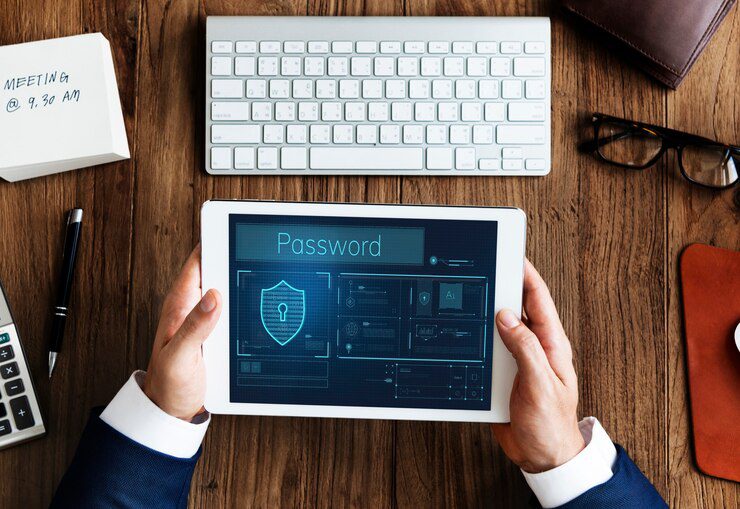Living in the digital age is pretty sweet, right? We can connect with friends and family across the globe, shop from the comfort of our couch, and even order pizza with a few taps. But with all this convenience comes a hidden foe: cybersecurity threats.
Don’t worry, though! You don’t need to be a tech whiz to secure your data and keep your online life secure. Here’s a crash course in cybersecurity essentials that will have you feeling like a digital fortress in no time.
Why Cybersecurity Matters:
Imagine someone snooping through your personal belongings – not cool, right? That’s what happens when your data gets hacked. This could include your passwords, bank accounts, personal information, and even embarrassing childhood photos (shudder).
But fear not, fellow internet citizen! By following these simple tips, you can significantly reduce your risk of cyberattacks:
Password Power Up:
Think of your passwords as the keys to secure your data. Make them strong and unique, using a combination of uppercase and lowercase letters, numbers, and symbols. Avoid using the same password across multiple accounts. If one gets compromised, they all become vulnerable. Consider using a password manager to help you create and store strong, unique passwords for all your accounts.
Ditch the “password123” and opt for password best practices like a complex concoction of letters, numbers, and special characters that even Sherlock Holmes couldn’t crack.
Multi-Factor Authentication (MFA) is Your BFF:
MFA adds an extra layer of security by requiring a second verification step beyond your password, like a code sent to your phone. This makes it much harder for hackers to gain access, even if they steal your password. By requiring two-factor authentication, such as a code sent to your phone or email, 2FA makes it exponentially harder for hackers to gain access to your accounts.
Be Wary of the Download Deluge:
Stick to downloading software and apps exclusively from reputable sources such as official app stores. Steer clear of clicking on dubious links or downloading attachments from unfamiliar senders. These could be loaded with malware, which is software designed to harm your device or steal your data.
Phishing for Trouble? Not Today!
Phishing scams are attempts to trick you into revealing personal information or clicking on malicious links. They often come in the form of emails, texts, or even fake social media posts that appear to be from legitimate sources. Phishing attacks are like the sneakiest catfish in the cyber sea – they lure you in with tempting bait (think: emails, texts, or social media messages) and then reel you in with malicious links or attachments. Don’t take the bait – always verify the sender’s identity and think twice before clicking on anything suspicious.
Here’s How to Spot a Phish
- Be cautious of emails or messages with urgent language or misspelled words.
- Avoid clicking on links or attachments sent by unfamiliar senders.
- Hover your cursor over the link to view the actual URL before clicking on it. It might not be what it seems!
- If you’re unsure, don’t be afraid to contact the sender directly to verify the legitimacy of the message.
Keep Your Software Up-to-Date
Software updates often include security patches that fix vulnerabilities hackers might exploit. Ensure you install updates promptly for your operating system, web browser, and other software as soon as they are released. Secure your data by keeping your operating system, apps, and antivirus software up to date to patch any vulnerabilities and keep the cyber baddies at bay.
Encrypt All the Things
Encryption is like wrapping your data in a virtual cloak of invisibility – even if hackers manage to get their grubby mitts on it, they won’t be able to make heads or tails of it. Whether you’re sending emails, storing files in the cloud, or browsing the web, make sure your data is encrypted to keep it safe from prying eyes.
Bonus Tip: Be mindful of what you share online. Avoid posting personal information like your home address or birthday on public platforms.
Conclusion
Safeguarding your data with cybersecurity essentials is not just a precautionary measure; it’s a critical aspect of navigating today’s digital landscape. By implementing strong passwords, staying updated on security measures, and remaining vigilant against cyber threats, you’re taking proactive steps to protect your valuable information and secure your data. Remember, in the ever-evolving world of cybersecurity, staying informed and proactive is key. So, embrace these essentials, fortify your defenses, and keep your data safe and secure. After all, in the digital age, it’s better to be safe than sorry.
By following these cybersecurity essentials, you can significantly reduce your risk of cyberattacks and protect your valuable data. Remember, a little vigilance goes a long way in keeping your online life secure.







